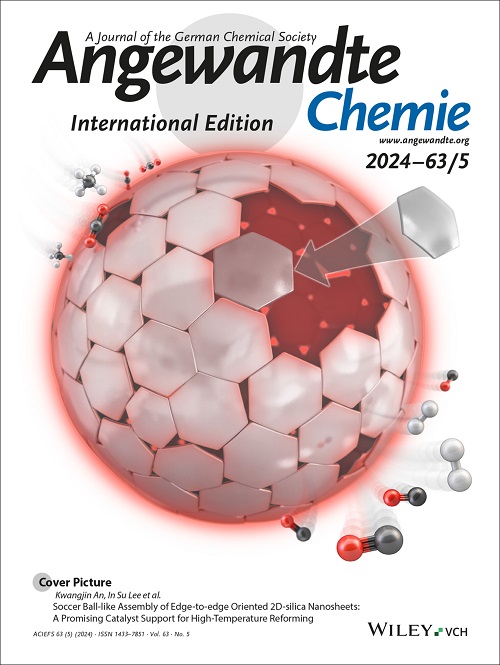Selective Sieving Effect of Multi‐Atomic Bismuth Interfaces for Efficient Formate Electrosynthesis and Evolution at Industrial Current Density
IF 16.1
1区 化学
Q1 CHEMISTRY, MULTIDISCIPLINARY
引用次数: 0
Abstract
Constructing multi‐atomic interfaces architectures are promising for electrocatalytic CO2 conversion, yet their synthesis and stability under industrial current densities remain challenging. Herein, multi‐atomic Bi interfaces (Bi0/Biδ+ moiety) were precisely engineered by embedding atomically dispersed Bi centers, encompassing both Bi single atoms and Bi atomic clusters into the substrate of porous Bi2O3‐x nanosheets. The composite showcases outstanding CO2 conversion performance, attaining remarkable faradaic efficiency for formate (FEformate) of 96.48% (at ultralow potential of ‐0.5 V vs. RHE) and 92.26% in alkaline and neutral electrolytes, along with exceptional long‐term stability over 150 h. Depending on designed CH3OH electrooxidation catalyst (CuOx/ZnCo(OH)x) at the anode, which couples CO2 conversion at the cathode, symmetrical/asymmetrical electrolyzer system were developed. The approach could obtain high‐added value products with FEformate >90% at both electrodes, achieving production rate of 4980 µmol h−1 cm‐2 under industrial current density. Combined In situ characterizations and theoretical calculations unravel that multiple atomic interfaces featuring interfacial atomic sieving effect effectively enhance preferential binding of *H and *CO2 to form *OCHO, while simultaneously suppressing the undesired recombination of hydrogen species into H2, rationalizing the high selectivity. Further intermediacy of concentrated formate precursors for subsequent C−N coupling toward urea synthesis, establishing pathway for sustainable evolution.多原子铋界面对高效甲酸盐电合成的选择性筛分效应及其在工业电流密度下的演化
构建多原子界面结构有望用于电催化CO2转化,但它们的合成和在工业电流密度下的稳定性仍然具有挑战性。在此,通过嵌入原子分散的Bi中心,将Bi单原子和Bi原子团簇包裹在多孔Bi2O3 - x纳米片的衬底上,精确地设计了多原子Bi界面(Bi0/Biδ+部分)。该复合材料具有出色的CO2转化性能,对甲酸盐(FEformate)的法拉第效率为96.48%(在‐0.5 V vs. RHE的超低电位下),对碱性和中性电解质的法拉第效率为92.26%,并具有超过150小时的长期稳定性。根据设计的阳极CH3OH电氧化催化剂(CuOx/ZnCo(OH)x)与阴极CO2转化耦合,开发了对称/不对称电解槽系统。该方法可以在两个电极上获得高附加值的产品,fe甲酸含量为90%,在工业电流密度下的生产率为4980µmol h−1 cm‐2。结合原位表征和理论计算表明,具有界面原子筛分效应的多原子界面有效地增强了*H和*CO2的优先结合形成*OCHO,同时抑制了不希望的氢向H2的重组,使高选择性合理化。浓缩甲酸前体在随后的C - N偶联过程中对尿素合成的进一步中介作用,建立可持续进化的途径。
本文章由计算机程序翻译,如有差异,请以英文原文为准。
求助全文
约1分钟内获得全文
求助全文
来源期刊
CiteScore
26.60
自引率
6.60%
发文量
3549
审稿时长
1.5 months
期刊介绍:
Angewandte Chemie, a journal of the German Chemical Society (GDCh), maintains a leading position among scholarly journals in general chemistry with an impressive Impact Factor of 16.6 (2022 Journal Citation Reports, Clarivate, 2023). Published weekly in a reader-friendly format, it features new articles almost every day. Established in 1887, Angewandte Chemie is a prominent chemistry journal, offering a dynamic blend of Review-type articles, Highlights, Communications, and Research Articles on a weekly basis, making it unique in the field.

 求助内容:
求助内容: 应助结果提醒方式:
应助结果提醒方式:


